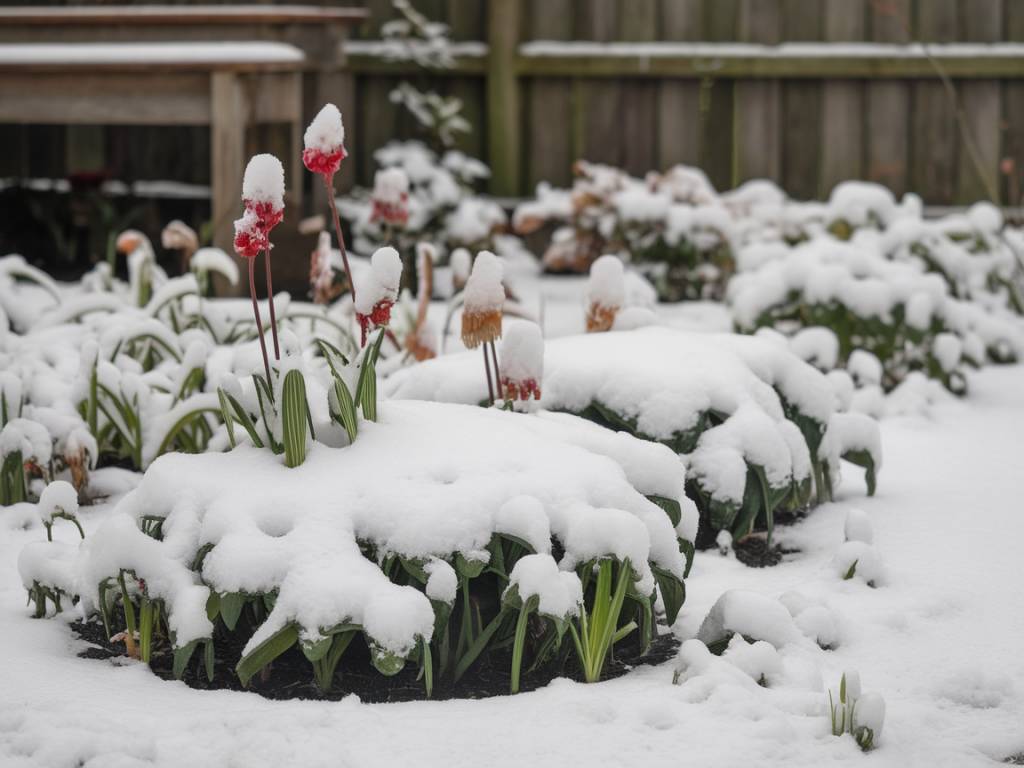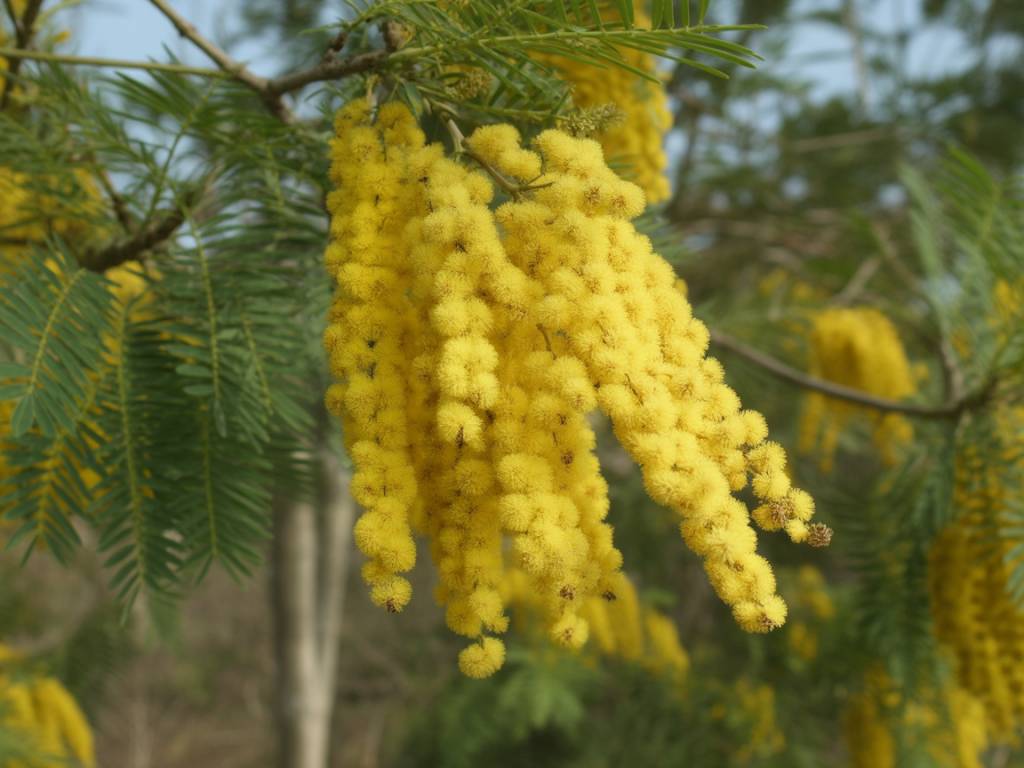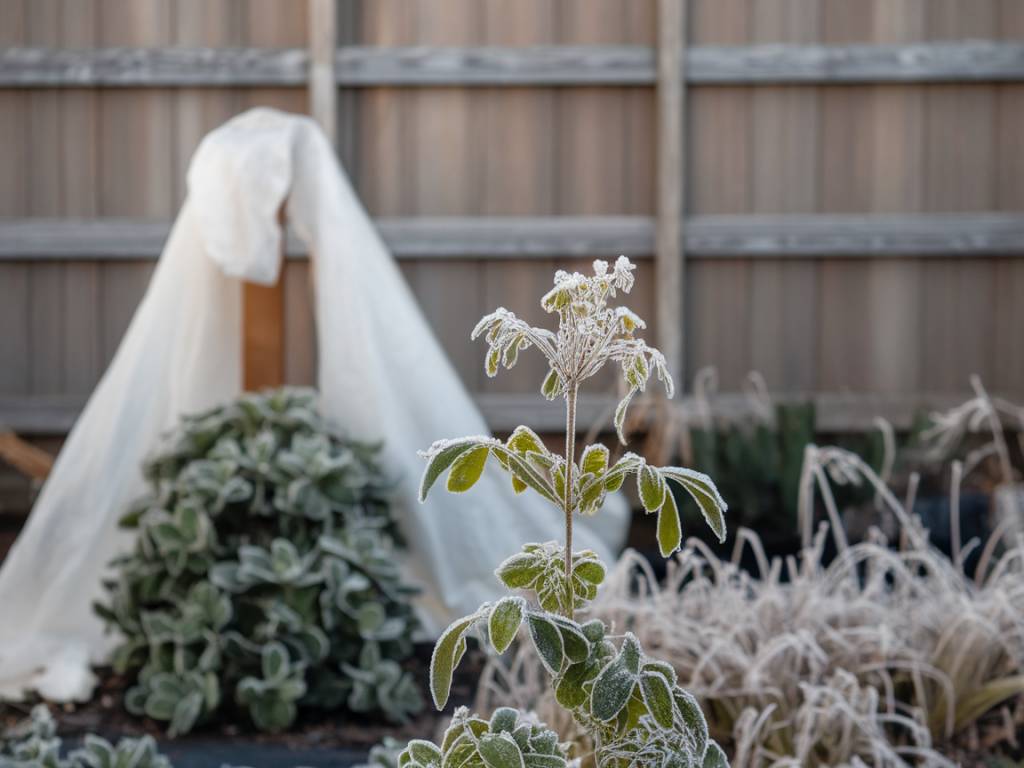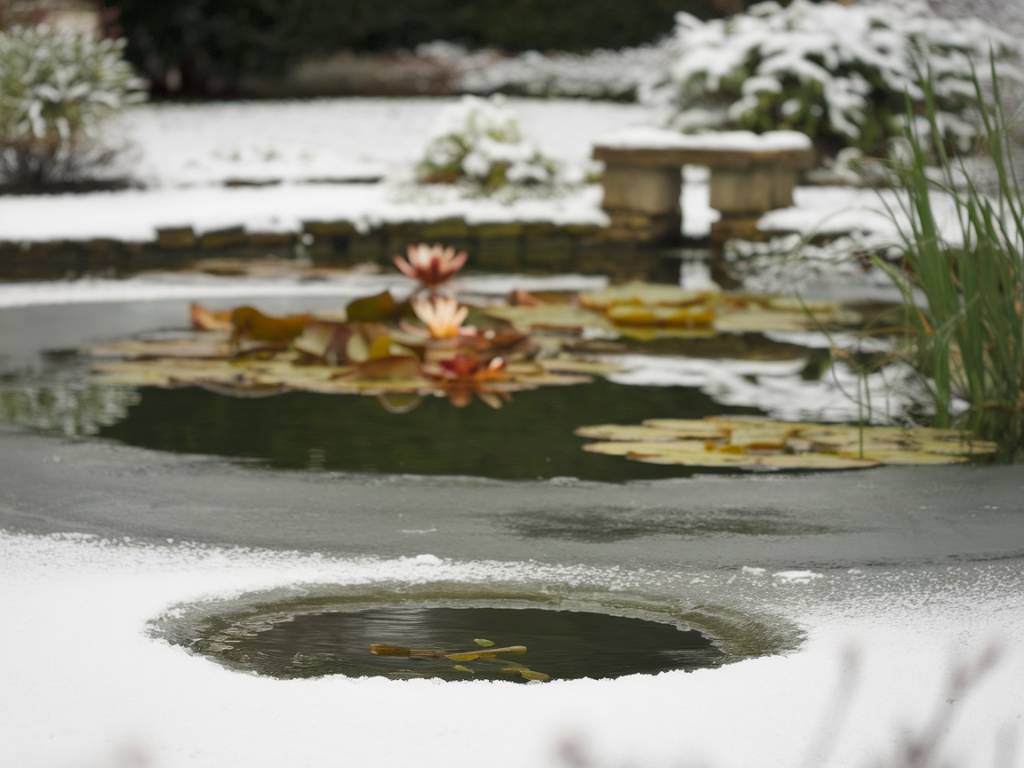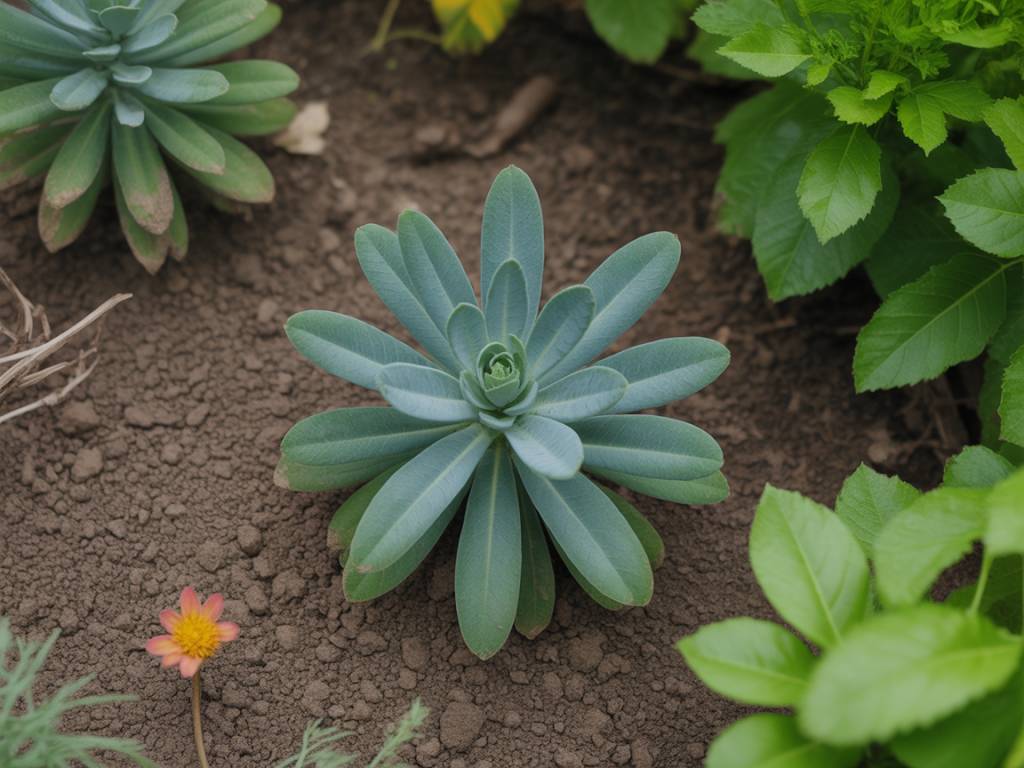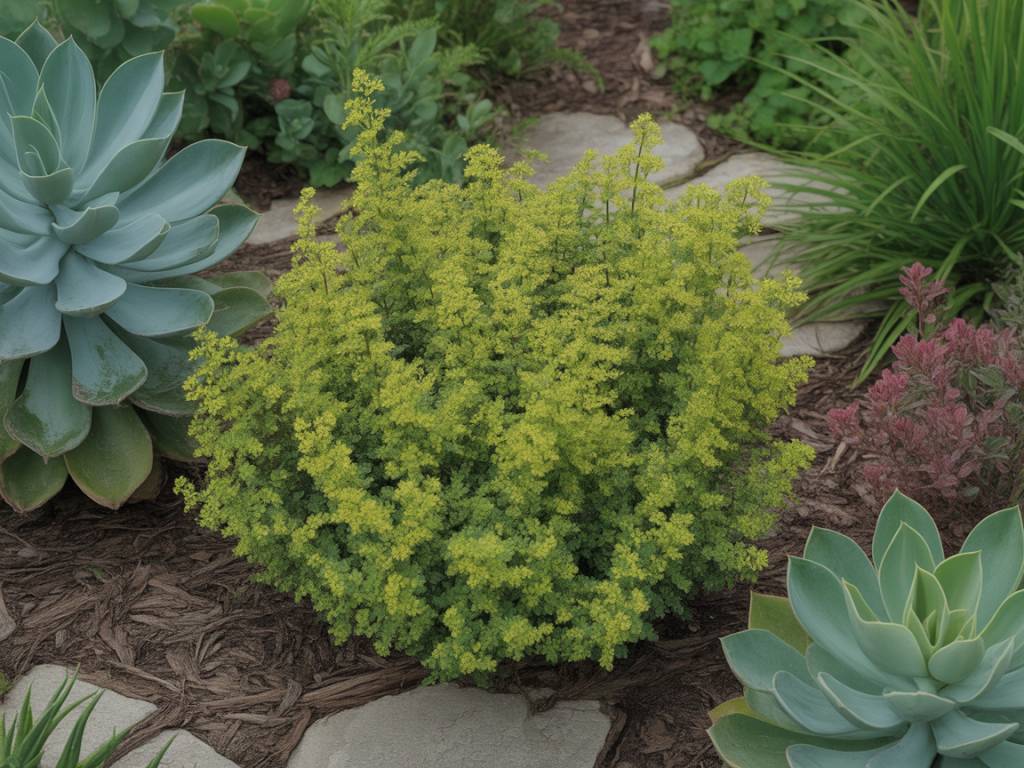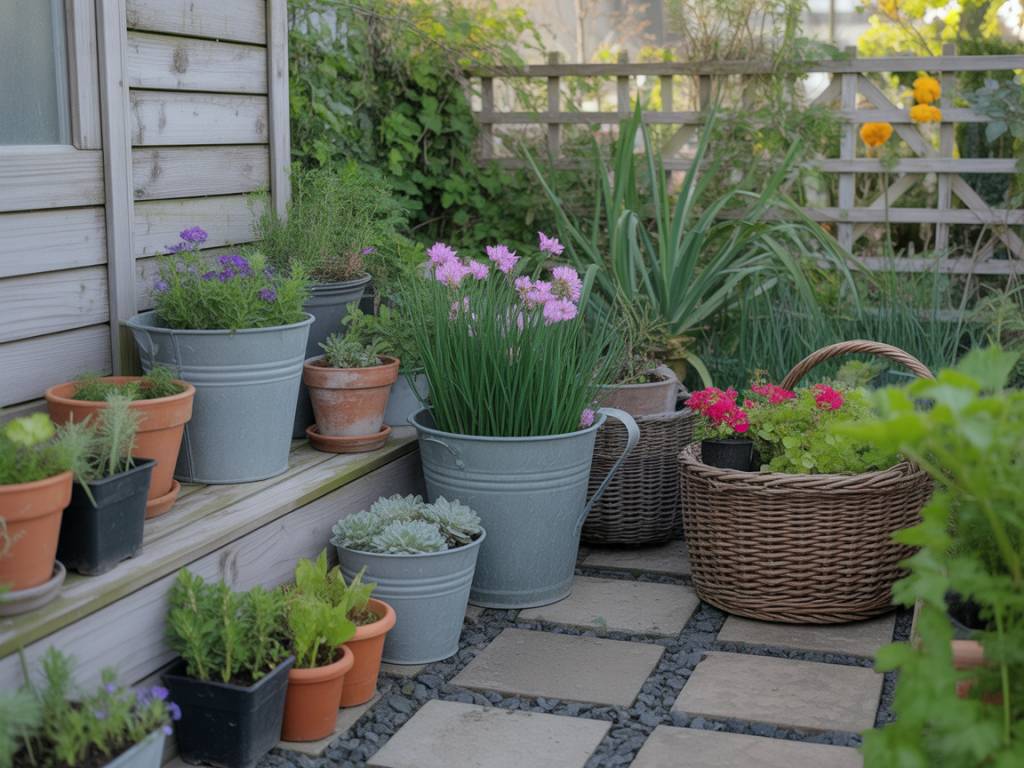« `html
As a staunch advocate of natural gardening and permaculture, I’m always on the lookout for eco-friendly ways to support the growth and health of my garden. One of the most overlooked yet incredibly effective methods is using snow as mulch. It’s a strategy I rely on to protect my perennials and bulbs during the cold UK winters, and I’ve seen fantastic results.
The Science Behind Snow Mulch
Snow can act as an excellent insulator for plants. Just like a well-tucked blanket, it traps air between its layers, maintaining a consistent temperature around your plants. This insulating effect helps to shield the delicate roots and bulbs from the harsh fluctuations of winter temperatures. Without this layer of protection, your soil could freeze and thaw repeatedly, potentially damaging or even killing your perennials and bulbs.
Natural Soil Moisture Retention
Another compelling reason to use snow as mulch is its ability to retain soil moisture. As the snow melts, it slowly releases water into the soil, providing a steady source of hydration for underground structures. This gradual melting process is much more beneficial than a sudden influx of water from rain, which can sometimes lead to erosion or nutrient runoff.
Preparing Your Garden for Snow Mulch
Before the snow starts to fall, it’s essential to prepare your garden. Here are some tips that I follow to get my beds ready:
- Clean Up Debris: Remove fallen leaves, dead plants, and other debris from your garden beds. This prevents rot and disease from affecting your perennials and bulbs.
- Loosen the Soil: Gently aerate the soil with a garden fork to improve its ability to retain moisture and nutrients.
- Apply Organic Mulch: A layer of organic mulch like straw or wood chips can further insulate your plants and encourage beneficial microbial activity in the soil. This can be left in place underneath the snow.
Snow Application Techniques
Once the snow begins to fall, here are some techniques that I employ to ensure my garden reaps the maximum benefits:
- Distribute Evenly: Make sure the snow is spread evenly across your garden beds. Avoid creating large piles that can smother plants.
- Avoid Salt Contamination: Be mindful of where your snow comes from, especially if you are shoveling it from walkways or driveways where it may have been contaminated with salt. Salt can harm your plants by disrupting their water absorption.
- Pat Down Lightly: Lightly pat down the snow to create a more compact and effective insulating layer. Don’t compress it too much, as you want to retain the air pockets that serve as insulators.
Monitoring Throughout Winter
While it might be tempting to hibernate indoors, it’s important to periodically check your garden throughout the winter months. I suggest the following steps:
- Inspect for Bare Patches: If any areas of your garden are exposed, add more snow to maintain an even layer.
- Watch for Animal Activity: Animals like rabbits and deer can disturb your snow mulch. Consider adding protective measures like plant netting or animal repellents if necessary.
- Monitor Soil Moisture: After significant thawing events, check the soil moisture levels. If the soil seems to dry out, consider adding a light watering to prevent your plants from becoming dehydrated.
Spring Thaw Transition
As winter transitions into spring, there are certain steps I follow to ensure a smooth transition for my garden:
- Gradual Snow Removal: Allow the snow to melt naturally and gradually. Rushing the process by shoveling away snow too early can expose your plants to late winter freezes.
- Inspect Soil Conditions: Once the snow has melted, check the soil for signs of compacting or erosion. Loosen the soil gently if needed to help air and water penetrate more effectively.
- Add Spring Mulch: As the temperatures warm up, I add a fresh layer of organic mulch to prepare my garden for the growing season. This helps to suppress weeds and retain soil moisture as my perennials and bulbs start to sprout.
Benefits of Snow as Mulch
The benefits of using snow as mulch extend beyond winter protection. Here are some additional advantages:
- Cost-Effective: Snow is readily available and free, making it a cost-effective mulching option for gardeners.
- Soil Health: The slow release of moisture from melting snow helps to promote soil health and reduce the need for frequent watering.
- Eco-Friendly: Utilizing natural resources like snow aligns with the principles of permaculture and sustainable gardening.
- Pest Control: A consistent layer of snow can also deter certain pests that might otherwise harm your garden during the winter months.
Embracing the natural cycle of seasons and using what nature provides helps me create a garden that thrives year-round. By utilizing snow as mulch, you not only protect your perennials and bulbs but also enrich the overall health of your garden ecosystem. So, the next time it snows, don’t see it as a chore or inconvenience but rather a nurturing blanket for your prized plants.
Happy gardening!
Samanta
« `

